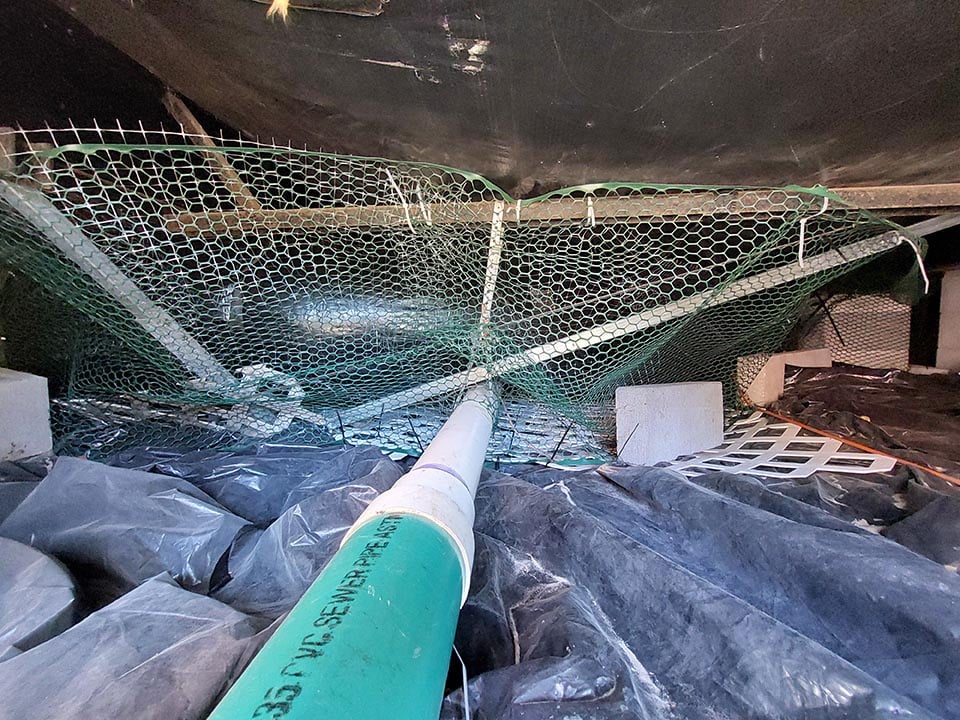Advice for replacing torn Flex with metal ducts
Comments
-
So you admit that it was never done right to begin with, but you gonna replace like for like?0
-
-
I did that in my own home when I put in new plumbing for a bathroom, not a mobile home, though. Here there is a one piece plastic underbelly and metal framing. Not even sure how I'm going to strap the flex duct up yet. Since there aren't any.MikeL_2 said:I've accessed small crawl spaces for repair / replacement work by cutting holes in the floor. Closets, under cabinets, and other discreet areas can help provide easier access. And if the finished flooring is carpeting, it's fairly simple to make & repair access holes.....
0 -
An update on the flex duct repair one year later: I decided just to replace the flex duct and try my best to protect it, vs, going with metal, because of the costs and all the twists and bends under the mobile home.
I first dug out a lot of sand, laid down plastic and vinyl lattice, and installed the new flex with straps as high off the ground as possible - what those "trusted professionals" failed to do. Then I wrapped the flex in plastic mesh fencing, attached with zip ties every few inches to the lattice and everywhere I could to the metal framing. I also added a metal elbow for the return at the floor.
Returning here after a year I did see one small hole under the lattice by the duct collar but nothing got back into the duct to do any damage.
So far a cost-effective solution to the critter problem, not sure if the fencing will prevent those who have a mouse problem, but mine was with armadillos and opossums, which I relocated (at least for now).
0
Categories
- All Categories
- 87.3K THE MAIN WALL
- 3.2K A-C, Heat Pumps & Refrigeration
- 61 Biomass
- 429 Carbon Monoxide Awareness
- 120 Chimneys & Flues
- 2.1K Domestic Hot Water
- 5.8K Gas Heating
- 115 Geothermal
- 166 Indoor-Air Quality
- 3.7K Oil Heating
- 77 Pipe Deterioration
- 1K Plumbing
- 6.5K Radiant Heating
- 395 Solar
- 15.7K Strictly Steam
- 3.4K Thermostats and Controls
- 56 Water Quality
- 51 Industry Classes
- 50 Job Opportunities
- 18 Recall Announcements


